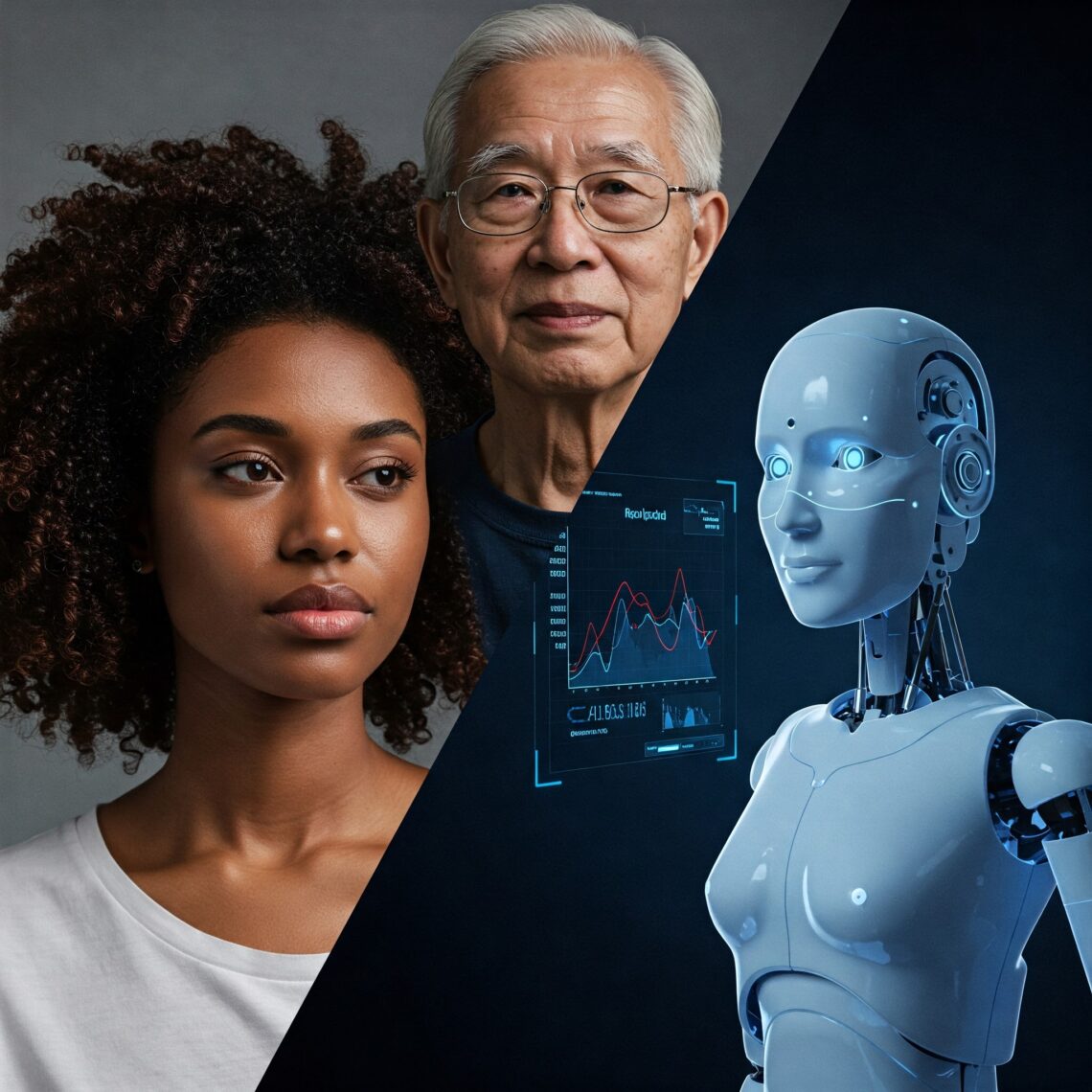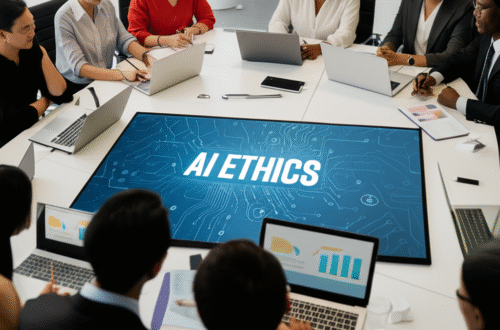Artificial Intelligence (AI) holds immense promise to revolutionize various aspects of our lives, from healthcare and education to transportation and communication. However, a critical challenge threatens to undermine its potential for good: AI bias and discrimination. This occurs when AI systems, due to flawed data or design, produce results that are unfairly skewed, prejudiced, or inaccurate against certain individuals or groups. Addressing this issue is not merely an ethical imperative; it’s a practical necessity for building trustworthy, reliable, and equitable AI systems that benefit everyone.
This article delves into the intricacies of AI bias and discrimination, exploring its causes, real-world impact, and, most importantly, the concrete steps and best practices that can be implemented to prevent it in the development and deployment of AI technologies.
What Is AI Bias?
At its core, AI bias arises when an AI system systematically favors certain outcomes or unfairly disadvantages particular individuals or groups. This can manifest in various ways, leading to prejudiced or inaccurate predictions, classifications, or decisions. It’s crucial to understand that while humans are often consciously or unconsciously biased, algorithmic bias emerges from the data and the way AI systems are designed.
A common misconception is that “AI is objective” because it relies on code and data. However, the data we feed AI is often a reflection of existing societal inequalities and biases. Furthermore, the choices made by developers in designing algorithms, selecting features, and weighting different factors can inadvertently introduce or amplify bias. Therefore, recognizing that AI is susceptible to bias is the first step towards mitigating it.
Real-World Examples of AI Bias
The impact of AI bias is not theoretical; it has manifested in several real-world scenarios with significant consequences:
- Hiring Systems: AI-powered recruitment tools trained on historical hiring data that underrepresented women or minority groups have been shown to unfairly penalize qualified candidates from these groups. For instance, an Amazon hiring tool was reportedly scrapped after it was found to discriminate against women because it was trained on a decade of mostly male resumes.
- Facial Recognition: Research by Joy Buolamwini at the MIT Media Lab highlighted the significant disparities in facial recognition technology’s ability to accurately identify individuals with darker skin tones, particularly women. Some commercially available systems showed error rates of nearly 35% for darker-skinned women, compared to less than 1% for white men. This has serious implications for law enforcement, security, and everyday applications.
- Predictive Policing: Algorithms used to predict crime hotspots have been shown to disproportionately target certain communities, often those with a history of over-policing. This creates a feedback loop where increased surveillance in these areas leads to more arrests, further skewing the data and reinforcing biased deployment of resources. Studies by organizations like the ACLU have raised concerns about the discriminatory impact of such systems.
- Loan Approvals and Credit Scoring: AI algorithms used by financial institutions to assess creditworthiness can perpetuate historical biases in lending practices, leading to discriminatory outcomes for marginalized groups seeking loans or mortgages. Studies have indicated that even when overt discriminatory factors are removed, proxies for race and socioeconomic status in the data can still lead to biased decisions.
These examples underscore the urgent need to understand and address the root causes of AI bias to prevent further harm and ensure equitable outcomes.
What Causes AI Bias?
AI bias can creep into systems at various stages of the development lifecycle:
Biased Training Data
The adage “garbage in, garbage out” holds true for AI. If the data used to train an AI system reflects existing societal inequalities, the AI will likely learn and perpetuate these biases. This can occur due to:
- Data reflects existing societal inequalities: Historical data often contains biases against certain demographic groups due to past discriminatory practices. For example, if a loan application dataset reflects past redlining practices, an AI trained on this data might unfairly deny loans to individuals living in those same areas, regardless of their current creditworthiness.
- Underrepresentation of minorities or edge cases: If the training data lacks sufficient representation of minority groups or unusual but valid scenarios (edge cases), the AI may not perform accurately or fairly for these groups or situations. For instance, if a self-driving car’s training data primarily features well-lit, clear weather conditions, it might struggle to operate safely in heavy rain or snow, disproportionately affecting individuals who live in such climates.
4.2 Labeling Errors
In supervised learning, data is labeled to teach the AI what to identify or predict. If these labels are incorrect, inconsistent, or reflect subjective human biases, the AI will learn these flawed associations. For example, if images of male nurses are frequently labeled as “doctor” while female doctors are labeled as “nurse,” an AI trained on this data will likely perpetuate this gender bias.
Algorithmic Design
The choices developers make in designing the AI algorithm itself can introduce bias:
- Feature selection: The features (input variables) chosen to train the model can inadvertently encode bias. For example, using zip codes as a feature in a credit scoring model might introduce socioeconomic bias if certain zip codes are historically associated with specific racial or ethnic groups and discriminatory lending practices.
- Weighting and model selection: The way different features are weighted and the type of AI model chosen can also influence the outcome and potentially introduce bias. Some models might be inherently more prone to certain types of bias than others.
4.4 Lack of Diversity in Development Teams
The individuals who design, develop, and test AI systems bring their own perspectives and assumptions, which can unconsciously influence the technology they create. A lack of diversity in AI development teams – across race, gender, ethnicity, socioeconomic background, and other dimensions – can lead to blind spots and a failure to consider the potential impact of AI on diverse user groups.
4.5 Feedback Loops
Once an AI system is deployed, its decisions can influence the data it receives in the future, creating feedback loops that reinforce initial biases. For example, if a biased predictive policing algorithm leads to increased surveillance and arrests in certain communities, the resulting crime data will further reflect this bias, leading the algorithm to perpetuate the same discriminatory patterns.
Consequences of AI Bias
The consequences of AI bias are far-reaching and can have severe negative impacts:
- Legal and Ethical Implications: Biased AI systems can violate anti-discrimination laws and fundamental ethical principles of fairness and equity.
- Loss of Trust in AI Systems: When AI systems produce unfair or discriminatory outcomes, it erodes public trust in the technology, hindering its adoption and potential benefits.
- Harm to Individuals and Vulnerable Populations: Biased AI can lead to unfair denial of opportunities (jobs, loans), miscarriages of justice (flawed risk assessments), and unequal access to essential services. Vulnerable populations are often disproportionately affected.
- Reputational Risk for Companies and Institutions: Organizations that deploy biased AI systems face significant reputational damage, leading to customer dissatisfaction and potential boycotts.
- Regulatory Penalties: As awareness of AI bias grows, regulatory bodies like those behind GDPR and the proposed EU AI Act are increasingly scrutinizing AI systems for discriminatory practices, potentially leading to significant financial penalties.
How to Prevent AI Bias
Preventing AI bias requires a proactive and comprehensive approach throughout the AI lifecycle:
1. Diverse and Representative Datasets
- Curate data carefully: Invest significant effort in collecting and cleaning training data, ensuring it is as representative as possible of the real-world population and the intended use case.
- Include edge cases and underrepresented groups: Actively seek out and incorporate data that represents minority groups and unusual but valid scenarios to improve the AI’s performance and fairness across all situations.
2 Bias Audits and Testing
- Regular auditing of algorithms for fairness: Implement regular and rigorous audits of AI algorithms to identify potential sources of bias and measure fairness across different demographic groups.
- Use of fairness assessment tools: Leverage tools like IBM Fairness 360 and Google What-If Tool to analyze models for bias and explore the impact of different fairness interventions.
3 Transparency and Explainability
- Make AI decisions interpretable: Strive for transparency in how AI systems make decisions, especially in high-stakes applications where understanding the reasoning is crucial.
- Use XAI (Explainable AI) models where applicable: Employ AI models and techniques that provide insights into the factors influencing their predictions, allowing for better understanding and identification of potential biases.
4 Inclusive Development Teams
- Promote diversity in AI teams: Foster diverse teams that include individuals from various backgrounds, perspectives, and experiences. This can help identify potential biases and blind spots that might be missed by homogenous teams.
5 Ethical AI Guidelines
- Establish AI ethics committees or review boards: Create internal bodies responsible for overseeing the ethical development and deployment of AI systems.
- Follow established frameworks: Adhere to ethical AI principles and guidelines developed by organizations like the OECD and the EU.
6 Regulation and Standards
- Comply with AI-specific laws: Stay informed about and adhere to emerging AI regulations, such as the EU AI Act and the US Blueprint for an AI Bill of Rights, which include provisions against discriminatory AI practices.
- Voluntary compliance with standards: Consider adopting relevant international standards, such as those being developed by ISO/IEC, to ensure responsible AI development and deployment.
Tools and Techniques to Detect and Mitigate Bias
A growing number of tools and techniques are available to help detect and mitigate bias in AI systems:
Open-source tools:
- IBM AI Fairness 360: A comprehensive toolkit of metrics, explanations, and algorithms to check for and mitigate bias in machine learning models and datasets.
- Google’s What-If Tool: A visual interface that allows users to interactively investigate machine learning model behavior and fairness across different subgroups.
- Microsoft Fairlearn: A Python package that enables the assessment and improvement of fairness in machine learning models.
- AI Explainability 360: A library of diverse algorithms that support the interpretability and explainability of AI models.
Techniques:
- Reweighting or resampling data: Adjusting the importance of different data points or oversampling underrepresented groups in the training data to balance its composition.
- Adversarial debiasing: Training a secondary AI model to identify and remove bias from the primary model’s representations.
- Fair representation learning: Developing techniques to learn data representations that are informative for the prediction task while also being fair across different groups.
Best Practices and Guidelines
Adopting these best practices can significantly contribute to building fairer AI systems:
- Use data documentation (e.g., Datasheets for Datasets): Create comprehensive documentation for datasets, outlining their sources, collection methods, potential biases, and intended uses.
- Human-in-the-loop systems for critical decisions: In high-stakes applications, incorporate human oversight and review of AI decisions to identify and correct potential biases.
- Regularly update models and data: Continuously monitor and update AI models and their training data to account for evolving societal norms and potential shifts in bias.
- Monitor for model drift and new biases post-deployment: Implement systems to detect when a model’s performance or fairness degrades over time due to changes in the data or environment.
Future of Fair AI
The field of fair and ethical AI is rapidly evolving:
- Rise of Responsible AI initiatives: Increased focus and investment in research and development of Responsible AI (RAI) frameworks and tools.
- Push for global AI ethics standards: Growing international efforts to establish common ethical principles and standards for AI development and deployment.
- Increased demand for AI accountability and transparency: Greater societal and regulatory pressure for organizations to be accountable for the fairness and transparency of their AI systems.
Conclusion
AI bias and discrimination are significant challenges that demand proactive and sustained attention. While the task of creating perfectly unbiased AI is complex, it is not insurmountable. By prioritizing diverse and representative data, implementing rigorous bias audits, fostering transparency and explainability, cultivating inclusive development teams, and adhering to ethical guidelines and regulations, we can build AI systems that are fairer, more trustworthy, and beneficial for all members of society. Ultimately, ethical AI is sustainable AI, paving the way for a future where this powerful technology truly serves humanity in an equitable and just manner.





